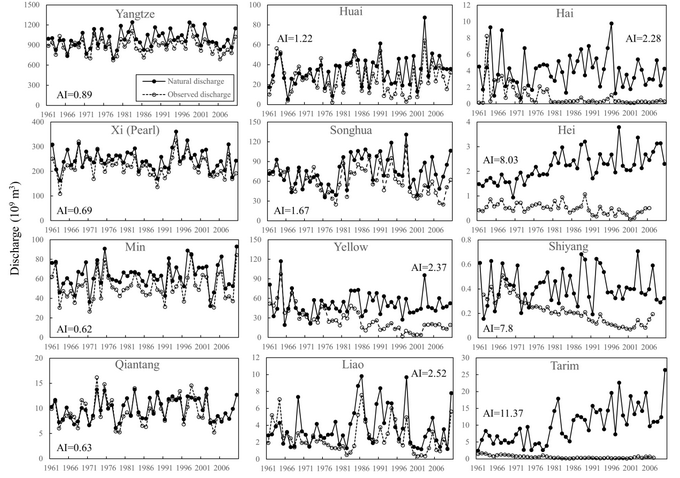- Home >> News&Events >> Events
The historical trajectories of China's water scarcity
Dr Xinyao Zhou at the Center for Agricultural Resources Research, CAS, and her colleagues analyzed the trend of water scarcity and quantified the the impact of upstream water use on downstream water scarcity for the past 50 years over China's 12 large basins by reconstructing natural surface runoff and comparing with observed runoff.
They found that over the past 50 years, China's surface water use increased 1.6 times and 65% increase occurring in north China, leading to national WTA (water use to availability) increased from 0.1 to 0.18 and annual per capita water resources decreased from 1500 m3 to 1200 m3. For humid basins, WTA fluctuated below 0.2; for arid basins, WTA increased from around 0.7 to around 0.9 in 2000, then decreased afterwards; for semi-humid and semi-arid basins, WTA has the largest increase. Quantitative analysis showed that the impact of upstream water use on downstream water scarcity was less than 10% in humid and semi-humid basins, while the impact increased to 37% in arid and semi-arid basins.
The study showed that how China's water scarcity was influenced by water use and water policies, and provided experiences and lessons for global water resources management. This study was supported by NSFC (41671021) and published at HESS (DOI: 10.5194/hess-23-2491-2019).

